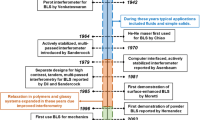Abstract
Chiroptical methods facilitating enantioselective quantitative measurements with good temporal and spatial resolution are highly desirable for process monitoring, e.g., during the production of pharmaceuticals. The recently proposed enantioselective Raman (esR) spectroscopy has a great potential in this respect. The a priori knowledge of how the settings of the experimental parameters will affect the measurement is crucial to avoid systematic errors and to build an optimized setup. This work presents a ray tracing-based model for the simulation of light scattering experiments and uses it to investigate the effects of experimental parameters in esR spectroscopy. The main advancement to the previous work is that the model is implemented in 3D and takes a large variety of effects into account. The laser beam is considered as a Gaussian beam. The light scattered from the different volume elements illuminated by the laser is traced through the optical components of the signal collection system. The results indicate that the enantioselective characteristics of the method that were proposed for 1D are still valid in a 3D geometry. The contrast and sharpness in the polarization-resolved intensity distributions are moderately reduced compared to the idealized case. This is very promising for the practical application of the esR technique. The results confirm that it can be applied for a broad range of settings and substances.












Similar content being viewed by others
References
S. Declerck, Y.V. Heyden, D. Mangelings, J. Pharm. Biomed. Anal. 130, 81–99 (2016)
J.R. Cossy, The importance of chirality in drugs and agrochemicals. in Comprehensive Chirality (Elsevier, Amsterdam, 2012), pp. 1–7
E. Francotte, W. Lindner, R. Mannhold, H. Kubinyi, G. Folkers, Chirality in drug research. in Methods and principles in medicinal chemistry (Wiley, Hoboken, 2007)
H. Noguchi, M. Takafuji, V. Maurizot, I. Huc, H. Ihara, J. Chromatogr. A 1437, 88–94 (2016)
T. Eriksson, S. Bjorkman, B. Roth, P. Hoglund, J. Pharm. Pharmacol. 52, 807–817 (2000)
C.P. Miller, J.W. Ullrich, Chirality 20, 762–770 (2008)
H.-J. Federsel, Chirality 15, 128–142 (2003)
Y. Qi, D. Liu, W. Zhao, C. Liu, Z. Zhou, P. Wang, Pestic. Biochem. Physiol. 125, 38–44 (2015)
D. Nasipuri, Stereochemistry of organic compounds: principles and applications (Wiley, Hoboken, 1994)
D. Parker, Chem. Rev. 91, 1441–1457 (1991)
P.J. Stephens, F.J. Devlin, J.J. Pan, Chirality 20, 643–663 (2008)
L.A. Nafie, B.E. Brinson, X.L. Cao, D.A. Rice, O.M. Rahim, R.K. Dukor, N.J. Halas, Appl. Spectrosc. 61, 1103–1106 (2007)
L.D. Barron, L. Hecht, E.W. Blanch, A.F. Bell, Prog. Biophys. Mol. Biol. 73, 1–49 (2000)
L.D. Barron, A.D. Buckingham, Chem. Phys. Lett. 492, 199–213 (2010)
D. Sofikitis, L. Bougas, G.E. Katsoprinakis, A.K. Spiliotis, B. Loppinet, T.P. Rakitzis, Nature 514, 76–79 (2014)
Y. Wang, Z. Yu, W. Ji, Y. Tanaka, H. Sui, B. Zhao, Y. Ozaki, Angew. Chem. Int. Ed 53, 13866–13870 (2014)
D. Patterson, M. Schnell, J.M. Doyle, Nature 497, 475 (2013)
J. Kiefer, K. Noack, Analyst 140, 1787–1790 (2015)
J. Kiefer, M. Kaspereit, Anal. Methods 5, 797–800 (2013)
J. Kiefer, Analyst 140, 5012–5018 (2015)
J. Eichler, H.J. Eichler, Laser, 4th edn. (Springer, Berlin, 2002)
J. Kiefer, Energies 8, 3165–3197 (2015)
C. Eckbreth, Laser diagnostics for combustion temperature and species, 2nd edn. (Gordon and Breach, Amsterdam, 1996)
R.E. Hopkins, Fundamental methods of ray tracing. in Military standardization handbook: optical design (US Defence Supply Agency, Washington, 1962)
M. Avendaño-Alejo, O.N. Stavroudis, A.R.B. Goitia, J. Opt. Soc. Am. A 19, 1668–1673 (2002)
M. Avendaño-Alejo, O.N. Stavroudis, J. Opt. Soc. Am. A 19, 1674–1679 (2002)
D. Brendel, D.A. Skoog, S. Hoffstetter-Kuhn, J.J. Leary, Instrumentelle Analytik: Grundlagen – Geräte - Anwendungen. (Springer, Berlin Heidelberg, 2013)
P. Williamson, J. Kiefer, Opt. Commun. 372, 98–105 (2016)
D.J. Gardiner, H.J. Bowley, P.R. Graves, D.L. Gerrard, J.D. Louden, G. Turrell, Practical Raman spectroscopy (Springer, Berlin, 2012)
Acknowledgements
The model implemented as Matlab code is available online as supplementary material. It is free to use and we would like to ask the users that they reference the present work when publishing results obtained with the code. The authors gratefully acknowledge funding of this work by Deutsche Forschungsgemeinschaft (DFG) through Grant KI1396/4-1.
Author information
Authors and Affiliations
Corresponding author
Electronic supplementary material
Below is the link to the electronic supplementary material.
Rights and permissions
About this article
Cite this article
Jüngst, N., Williamson, A.P. & Kiefer, J. Numerical model for predicting experimental effects in enantioselective Raman spectroscopy. Appl. Phys. B 123, 128 (2017). https://doi.org/10.1007/s00340-017-6685-z
Received:
Accepted:
Published:
DOI: https://doi.org/10.1007/s00340-017-6685-z




